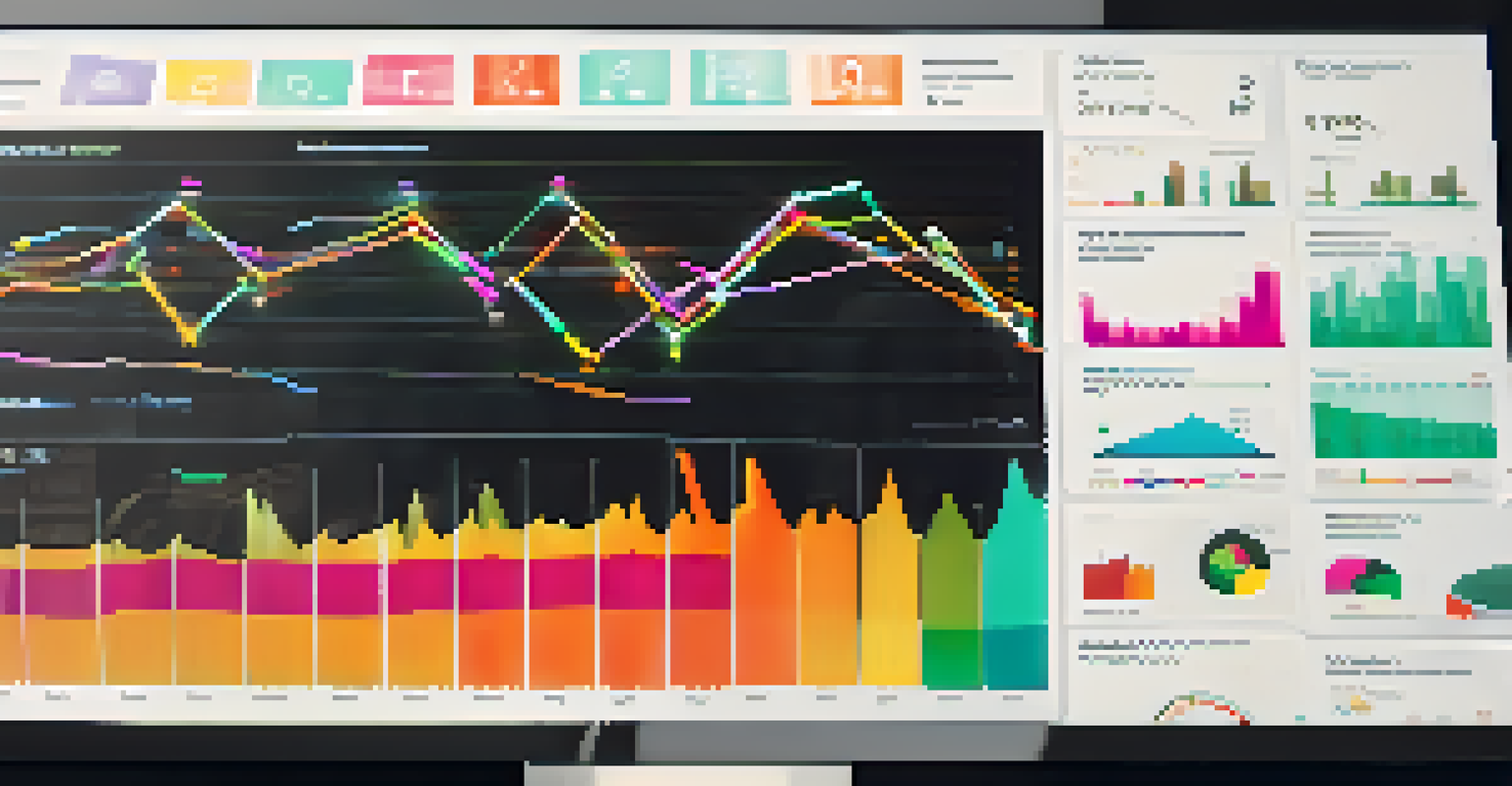Measuring the ROI of Business Process Automation Initiatives

Understanding Business Process Automation (BPA)
Business Process Automation (BPA) refers to the use of technology to automate repetitive tasks within an organization. It streamlines workflows, reduces manual effort, and enhances efficiency. By automating mundane processes, companies can focus on more strategic initiatives that drive growth.
Automation does not just change the way we work, it changes the way we think about work.
Imagine a factory where workers manually assemble products; this is akin to a business lacking BPA. Now, picture that same factory with robotic arms completing assembly—this is the transformative power of automation. BPA not only speeds up processes but also minimizes human error, leading to improved quality.
Ultimately, understanding BPA is the first step toward measuring its ROI. A well-implemented BPA initiative can result in significant cost savings and productivity gains, making it essential for businesses to grasp its full potential.
Identifying Key Performance Indicators (KPIs)
To measure the ROI of your automation initiatives, it's crucial to identify relevant Key Performance Indicators (KPIs). These are quantifiable metrics that help gauge the effectiveness of automation. Common KPIs include time savings, cost reductions, and increased output.

For instance, if you automate a customer service process, a relevant KPI could be the reduction in average response time. By tracking this KPI, you can directly see the impact of automation on customer satisfaction and operational efficiency.
BPA Enhances Efficiency and Focus
Business Process Automation streamlines repetitive tasks, allowing companies to direct their efforts towards strategic growth initiatives.
Establishing clear KPIs gives you a benchmark to measure against over time. This data not only justifies the investment in automation but also highlights areas for further improvement.
Calculating Costs and Benefits of Automation
When evaluating the ROI of automation, it's essential to calculate both costs and benefits accurately. Costs may include software purchase, implementation, training, and ongoing maintenance. Conversely, benefits might encompass labor cost savings, reduced error rates, and improved process speed.
The goal of automation is to eliminate the human, not to eliminate the humanity.
For example, if a manual task takes four hours a day and costs $20 per hour, that’s an annual cost of approximately $40,000. If automation can reduce that task to one hour a day, the savings can be substantial, showcasing the potential ROI.
By quantifying both sides, you can create a clear financial picture of your automation initiatives. This comprehensive view will help stakeholders understand the true value of the investment.
Using the ROI Formula for BPA
The classic formula for ROI is (Net Profit / Cost of Investment) x 100. To apply this to BPA, you first need to determine your net profit from automation, which is the total benefits minus the total costs. This calculation provides a percentage that reflects the efficiency of your investment.
For example, if your automation project costs $50,000, but it generates $100,000 in savings over a year, your ROI would be (50,000 / 50,000) x 100 = 100%. This clear metric illustrates the financial impact of your automation efforts.
KPIs Measure Automation Success
Identifying relevant Key Performance Indicators is essential for gauging the effectiveness and ROI of automation initiatives.
This simple formula empowers decision-makers to evaluate the success of their initiatives and make informed choices about future investments in automation.
Evaluating Qualitative Benefits of Automation
While quantitative metrics are vital, it’s equally important to assess the qualitative benefits of BPA. These might include enhanced employee morale, improved customer satisfaction, and better compliance with regulations. Such outcomes can significantly impact a business's overall success.
Consider a scenario where automating a tedious reporting task allows employees to focus on strategic projects. While the time saved can be quantified, the boost in team morale and creativity is qualitative, yet equally valuable.
Capturing qualitative benefits provides a holistic view of automation's impact, enriching the overall ROI story. This approach encourages organizations to see beyond just numbers and appreciate the broader implications of their automation efforts.
Continuous Monitoring and Adjustment
Measuring ROI is not a one-time activity; it requires continuous monitoring and adjustment. As business environments change, so too do the metrics that matter. Regularly reviewing KPIs and ROI calculations ensures that your automation initiatives remain aligned with organizational goals.
For instance, if a new technology emerges or market demands shift, your automation processes may need refinement. Adjusting your approach keeps your operations efficient and responsive to change.
Qualitative Benefits Matter Too
In addition to quantifiable metrics, the qualitative benefits of automation, such as employee morale and customer satisfaction, significantly contribute to overall success.
Engaging in this ongoing evaluation fosters a culture of improvement. It enables organizations to adapt their strategies based on real-time data, enhancing the overall effectiveness of their automation efforts.
Communicating ROI to Stakeholders
Once you’ve measured the ROI of your automation initiatives, communicating those results to stakeholders is crucial. Clear communication helps ensure buy-in for future projects and demonstrates the value of current investments. Use visuals like charts and graphs to make the data engaging and easy to digest.
For example, presenting a before-and-after scenario highlighting time savings and cost reductions can be persuasive. Stakeholders are more likely to support future automation efforts when they see tangible results.

Ultimately, effective communication of ROI not only reinforces the benefits of automation but also cultivates a culture of innovation within the organization.